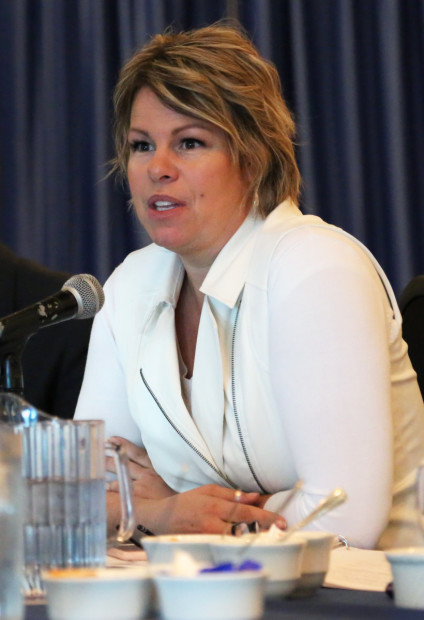Members of the State Board of Education want to explore using growth as opposed to proficiency benchmarks when it comes to identifying schools for improvement.
State Board members spent much of Wednesday afternoon’s work session at Boise State University debating school accountability, performance metrics, data collection and student outcomes.

Although the State Board did not take action regarding Idaho’s longterm education goals and the consolidated state plan to comply with the federal Every Student Succeeds Act, tweaks or changes could be coming later this year.
“This is step one,” State Board President Debbie Critchfield said. “I’m not sure how many steps there are, but I don’t think it will take 100.”
State Board members asked State Department of Education staffers to return with some proposed models for changes that could be debated or adopted at a future meeting.
“You’ve heard me say one measure or test score doesn’t tell the whole story, it’s just a snapshot in a day of the lives of our students,” Superintendent of Public Instruction Sherri Ybarra said. “I’d Ike to see us move to a motion picture of growth over time.”
Although the discussion jumped around, two of the focal points were the longterm goals and interim targets from the consolidated state plan. Idaho has so far missed its graduation rate targets and missed its interim targets in math and English over the past two years.
There doesn’t appear to be any state or federal consequences for missing the annual interim targets, and the longterm goals don’t come due until 2022.
But Critchfield has said she wants the Board to be more deliberative and consider whether the goals are appropriate and useful to educators and students. One thing she wants to focus on is doing a better job communicating goals and decisions to school districts and parents.
Wednesday’s debate was a little complicated. The feds say goals and targets from the ESSA plan still must use proficiency as the gauge for achievement. But State Board members said that doesn’t prevent them from placing a greater emphasis on growth, or progress and improvement, when it comes to publicly identifying the state’s lowest performing schools and the schools flagged for targeted support and improvement.
“There were many schools that were unfairly beaten up when our only measure was proficiency,” State Board member Linda Clark said. Meanwhile, many schools that were publicly identified for improvement weren’t given enough credit for showing progress and growth even though they fell short of proficiency benchmarks.
Some of those schools were “knocking it out of the park” with growth and should have been recognized for the improvements instead of dinged, Clark said.
There was some sobering news, too. In order to meet the longterm goals by 2022, Idaho actually has more work to do because of the hole that was dug missing the initial interim targets. For instance, Idaho’s interim target for math proficiency was 51.3 percent of all students for 2019. But only 45.1 percent of all students were proficient in math in 2019. That means there is more ground to make up in each of the next two years to reach 61.1 percent proficiency longterm goal by 2022. Click here for targets and goals compared to performance.
Clark and Ybarra said it is important to keep things in perspective. When Idaho began setting ESSA goals in 2016-17, Idaho was transitioning to new assessments and basically only had one year’s worth of data available as a baseline.
Faced with a federal deadline to produce an ESSA plan, Clark compared the process of developing the goals to a blindfolded darts player. When it came time to throw the darts, they were just hoping to hit the wall, not another player standing nearby, she said.
“We knew nothing, we had a brand new test,” Clark said.
The State Board meeting is scheduled to resume at 8 a.m. Thursday at Boise State.
Further reading
For a closer look at students achievement in Idaho compared to Idaho’s ESSA goals, click here.
